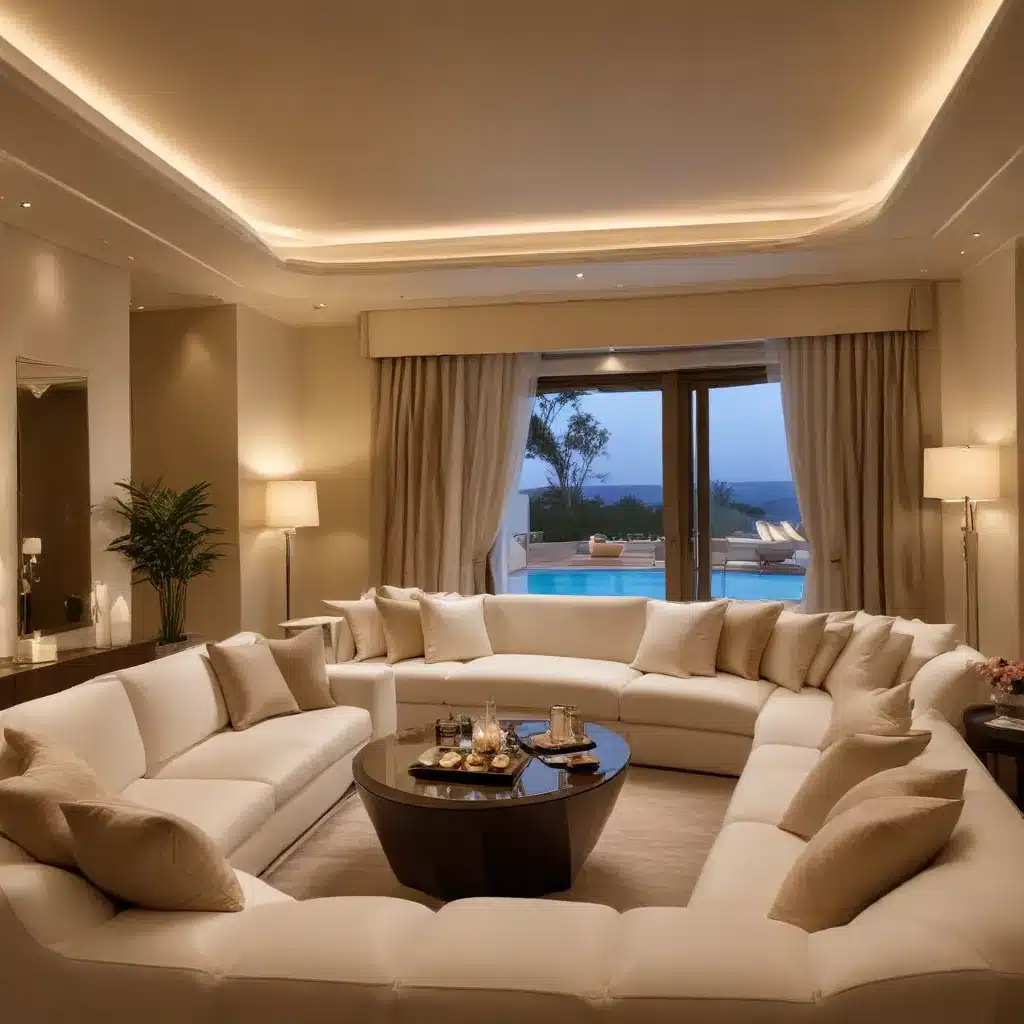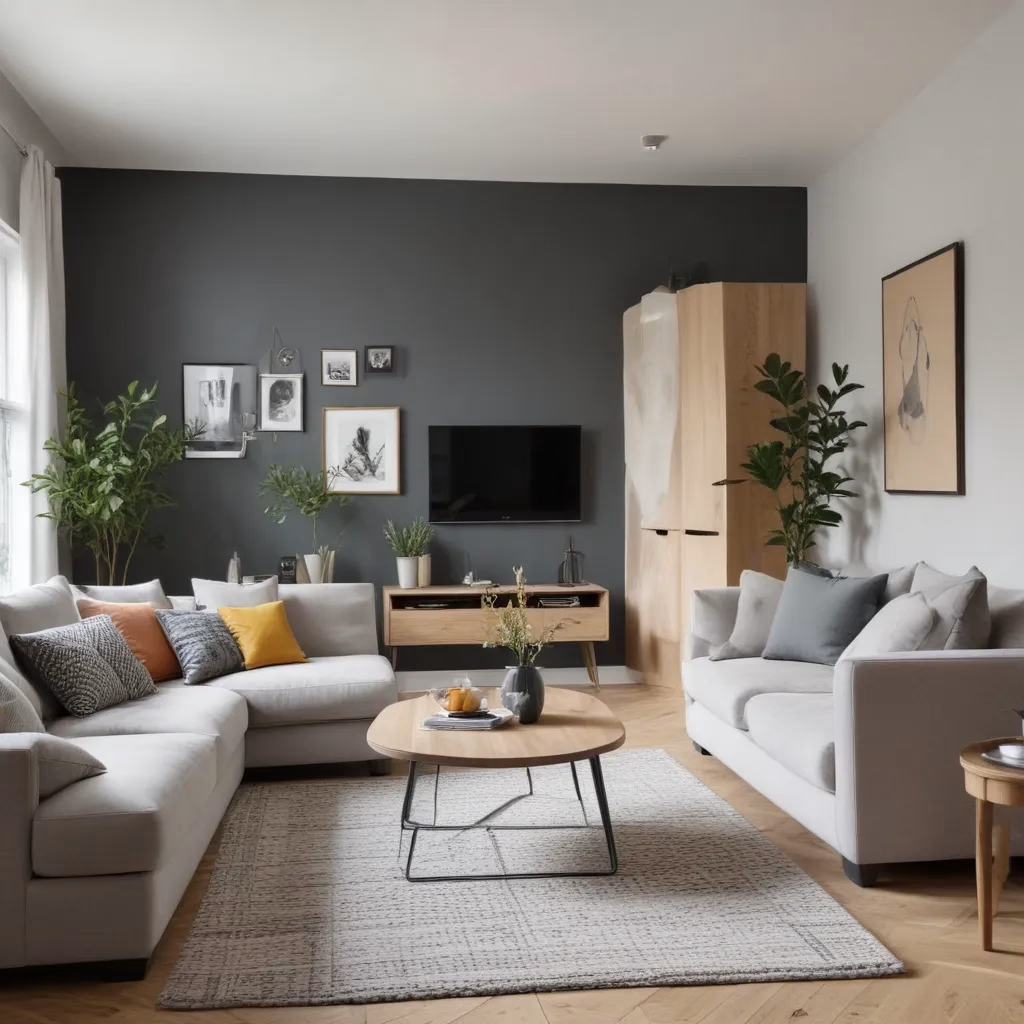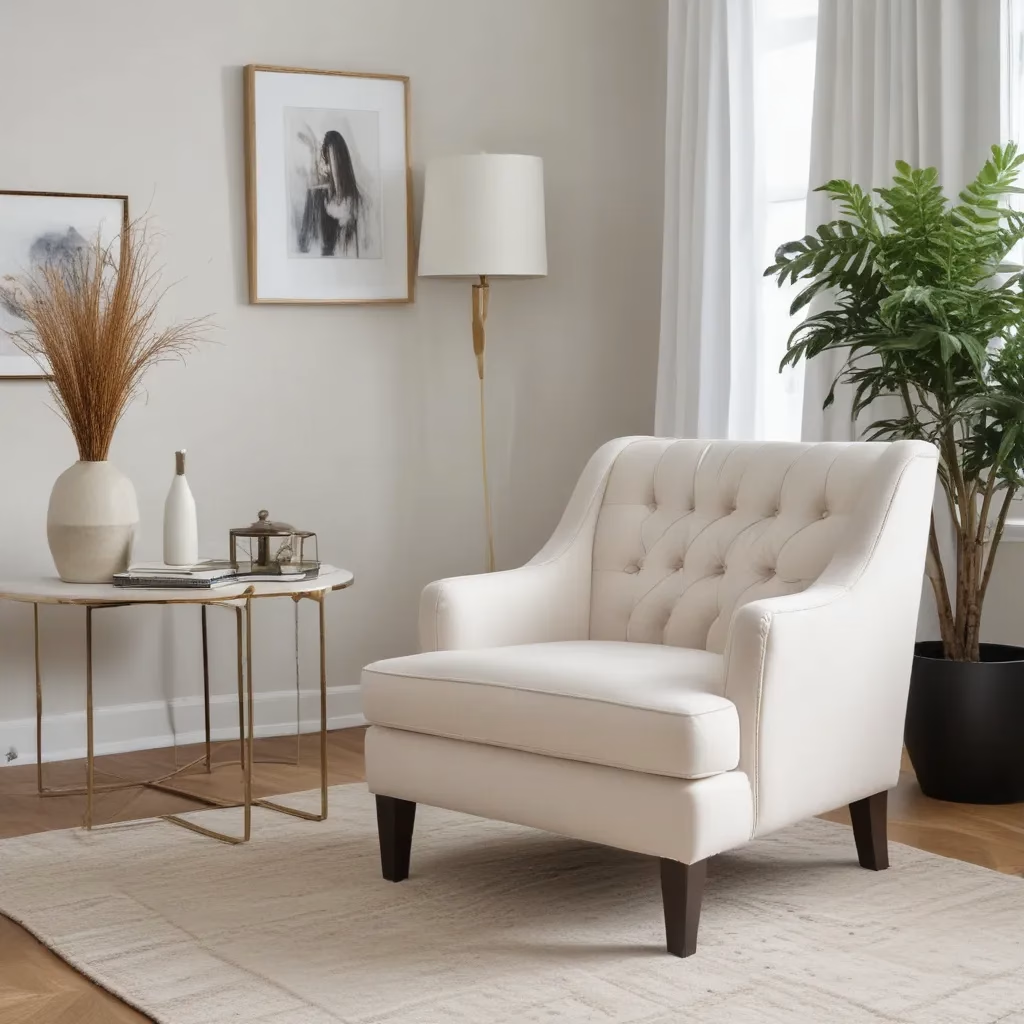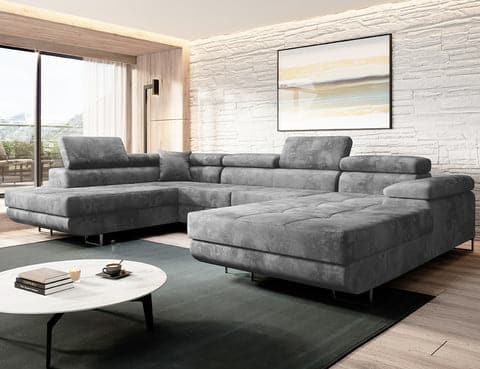
The Essence of Comfort: Understanding Sofa Styles
When it comes to creating a relaxing atmosphere in your home, the right sofa can make all the difference. As we approach autumn 2024, UK homeowners are increasingly focused on combining comfort with style in their living spaces. The sofa is often the centrepiece of a room, serving as both a functional piece of furniture and a statement of personal taste.
Contemporary UK interiors are seeing a shift towards sofas that offer more than just a place to sit. They’re becoming havens of relaxation, designed to envelop you in comfort after a long day. This trend reflects a growing desire for home furnishings that support well-being and create a sense of luxury in everyday life.
The most popular sofa styles in the UK market today include:
- Chesterfield: A timeless classic with its distinctive deep-buttoned upholstery and rolled arms.
- Mid-century Modern: Clean lines and tapered legs that appeal to those who appreciate retro aesthetics.
- Sectional: Versatile and spacious, perfect for large families or those who love to entertain.
Each style brings its own character to a room, influencing the overall ambiance and functionality of the space. When selecting a sofa, it’s essential to consider how it will fit into your existing decor and lifestyle.
Material Matters: Choosing the Right Upholstery
The choice of upholstery material is crucial in determining both the look and longevity of your sofa. In the UK, where the weather can be unpredictable and homes often serve multiple purposes, selecting the right fabric is key to ensuring your sofa remains beautiful and functional for years to come.
Let’s compare some popular upholstery options:
| Material | Durability | Maintenance | Comfort | Aesthetic Appeal |
|---|---|---|---|---|
| Leather | High | Easy | High | Luxurious |
| Linen | Medium | Moderate | High | Natural, Casual |
| Velvet | Medium | Challenging | High | Plush, Elegant |
| Wool | High | Moderate | High | Warm, Textured |
Leather remains a favourite among UK consumers for its durability and ease of cleaning. It’s particularly well-suited to homes with children or pets. Linen, on the other hand, offers a more casual, breathable option that’s perfect for creating a relaxed atmosphere.
Velvet has seen a resurgence in popularity, adding a touch of glamour to living rooms across the country. Its soft texture and rich appearance make it an excellent choice for those looking to create a luxurious feel in their home.
Wool blends are gaining traction as an eco-friendly option. They offer natural resistance to staining and wear, making them a practical choice for busy households.
When selecting your sofa’s upholstery, consider factors such as:
- Daily use: How often will the sofa be used, and by whom?
- Room location: Will it be exposed to direct sunlight or high-traffic areas?
- Cleaning requirements: How much time are you willing to dedicate to maintenance?
By carefully weighing these factors, you can choose a material that not only looks beautiful but also stands up to the demands of your lifestyle.
Comfort Engineering: The Science of Sofa Design
The comfort of a sofa goes beyond what meets the eye. Modern sofa design incorporates ergonomic principles to ensure that your relaxation time is truly restorative. UK furniture makers are at the forefront of integrating comfort-enhancing features into their designs.
Key elements of comfort engineering in sofas include:
- Frame construction: Solid hardwood frames provide the best support and longevity.
- Suspension systems: High-quality springs or webbing ensure even weight distribution.
- Cushion filling: A combination of foam and fibre offers the ideal balance of support and softness.
The most comfortable sofas often feature a mix of materials in their cushions. For example, a core of high-resilience foam wrapped in a layer of soft fibre can provide both support and a plush feel. Some UK manufacturers are experimenting with memory foam and gel-infused materials to enhance comfort further.
Seat depth and back height also play crucial roles in comfort. A deeper seat might be preferable for taller individuals, while a higher back can provide better support for those who like to read or watch television while seated.
Sizing Up Your Space: Finding the Perfect Fit
Choosing the right size sofa is critical for both comfort and aesthetics. A sofa that’s too large can overwhelm a room, while one that’s too small may look out of place and fail to provide adequate seating.
To determine the ideal size for your space:
- Measure your room dimensions carefully.
- Consider traffic flow and leave enough space for people to move around comfortably.
- Think about how the sofa will be used – for entertaining, family time, or as a centrepiece for conversation.
A general rule of thumb is to leave at least 45cm of space around the sofa for easy movement. If you’re considering a sectional, be sure to account for any chaise or corner pieces in your measurements.
For those living in smaller UK homes or flats, multifunctional sofas are becoming increasingly popular. Sofa beds and storage sofas offer practical solutions for maximising space without compromising on style or comfort.
Colour and Pattern: Making a Statement
The colour and pattern of your sofa can dramatically impact the feel of your room. As we move into autumn 2024, UK interior trends are favouring:
- Rich jewel tones: Deep blues, emerald greens, and burgundies add warmth and sophistication.
- Earthy neutrals: Warm beiges, soft greys, and muted greens create a calming atmosphere.
- Bold patterns: Geometric prints and large-scale florals make a statement when used sparingly.
When selecting a colour or pattern, consider:
- The overall colour scheme of your room
- The amount of natural light the space receives
- How often you like to update your decor
If you prefer to change your decor frequently, a neutral-coloured sofa provides a versatile base that can be easily updated with colourful cushions and throws.
Sustainability in Sofa Production
Sustainability is becoming an increasingly important factor for UK consumers when choosing furniture. Many are looking for sofas made from eco-friendly materials or produced using sustainable manufacturing processes.
Some sustainable options to consider include:
- Recycled fabrics: Made from post-consumer plastic bottles or other recycled materials.
- Organic cotton: Grown without harmful pesticides or chemicals.
- FSC-certified wood: Sourced from responsibly managed forests.
When shopping for a sustainable sofa, look for certifications such as the Forest Stewardship Council (FSC) label or the Global Organic Textile Standard (GOTS). These indicate that the materials used meet strict environmental and social criteria.
UK furniture makers are responding to this demand by offering more sustainable options. Some are even implementing take-back schemes, where they’ll recycle your old sofa when you purchase a new one.
Care and Maintenance: Keeping Your Sofa Looking Its Best
Proper care and maintenance can significantly extend the life of your sofa. Here are some tips to keep your sofa looking its best:
- Vacuum regularly: Use the upholstery attachment to remove dust and debris from crevices.
- Rotate cushions: This ensures even wear and maintains the sofa’s shape.
- Address spills immediately: Blot (don’t rub) spills with a clean, dry cloth.
- Use arm covers: These protect high-wear areas from damage.
- Follow manufacturer’s cleaning instructions: Different materials require different cleaning methods.
For leather sofas, conditioning every 6-12 months can help maintain the material’s suppleness and prevent cracking. Fabric sofas may benefit from professional cleaning once a year, depending on usage.
The Investment Perspective: Balancing Cost and Quality
When shopping for a sofa, it’s important to view it as an investment in your home and comfort. While it can be tempting to opt for a lower-priced option, investing in a high-quality sofa often proves more economical in the long run.
Consider the following when evaluating the cost of a sofa:
- Lifespan: A well-made sofa can last 10-15 years or more.
- Comfort: Higher-quality materials generally provide better comfort over time.
- Resale value: Quality pieces often retain some value if you decide to sell in the future.
While prices can vary widely, expect to invest anywhere from £1,000 to £3,000 or more for a high-quality sofa from a reputable UK manufacturer. Remember that financing options are often available, allowing you to spread the cost over time.
Customisation: Tailoring Your Sofa to Your Needs
Many UK furniture makers offer customisation options, allowing you to create a sofa that perfectly fits your needs and style. Common customisation options include:
- Fabric or leather selection: Choose from a wide range of colours and textures.
- Leg style and finish: Tapered, turned, or block legs in various wood or metal finishes.
- Cushion firmness: Select the level of support that’s right for you.
- Size adjustments: Some manufacturers can modify sofa dimensions to fit your space.
Customisation can add to the overall cost and delivery time of your sofa, but it ensures that you get exactly what you want. When considering customisation, be sure to request fabric swatches or wood samples to help visualise the final product.
The Finishing Touches: Accessorising Your Sofa
Once you’ve chosen the perfect sofa, accessories can help tie it into your overall decor scheme. Popular accessories in the UK market include:
- Throw pillows: Add colour, texture, and extra comfort.
- Blankets or throws: Provide warmth and visual interest.
- Side tables: Offer a place for drinks, books, or decorative items.
- Floor lamps: Create ambiance and provide task lighting for reading.
When selecting accessories, aim for a mix of textures and complementary colours to create a cohesive look. Remember that less is often more – a few well-chosen pieces can have more impact than a cluttered arrangement.
Making Your Decision: Tips for Sofa Shopping
When you’re ready to start shopping for your new sofa, keep these tips in mind:
- Set a budget: Determine how much you’re willing to spend before you start looking.
- Test in person: Whenever possible, visit showrooms to sit on sofas and assess comfort.
- Read reviews: Look for feedback from other customers, particularly regarding comfort and durability.
- Check delivery options: Ensure the retailer can deliver to your home and assemble the sofa if needed.
- Understand the return policy: Know your options if the sofa doesn’t meet your expectations.
Remember that the perfect sofa is one that not only looks great in your space but also provides the comfort and functionality you need. Take your time with the decision, and don’t be afraid to ask questions or request additional information from retailers.
For a wide selection of sofas that combine style, comfort, and quality, visit Sofa Spectacular. Their range includes options to suit various tastes and budgets, making it easier to find the perfect sofa for your UK home.
In conclusion, choosing the right sofa involves careful consideration of style, material, size, and personal preferences. By taking the time to research and evaluate your options, you can find a sofa that not only enhances your living space but also provides a comfortable retreat for years to come. Whether you prefer classic elegance or contemporary chic, there’s a perfect sofa out there waiting to become the heart of your home.




